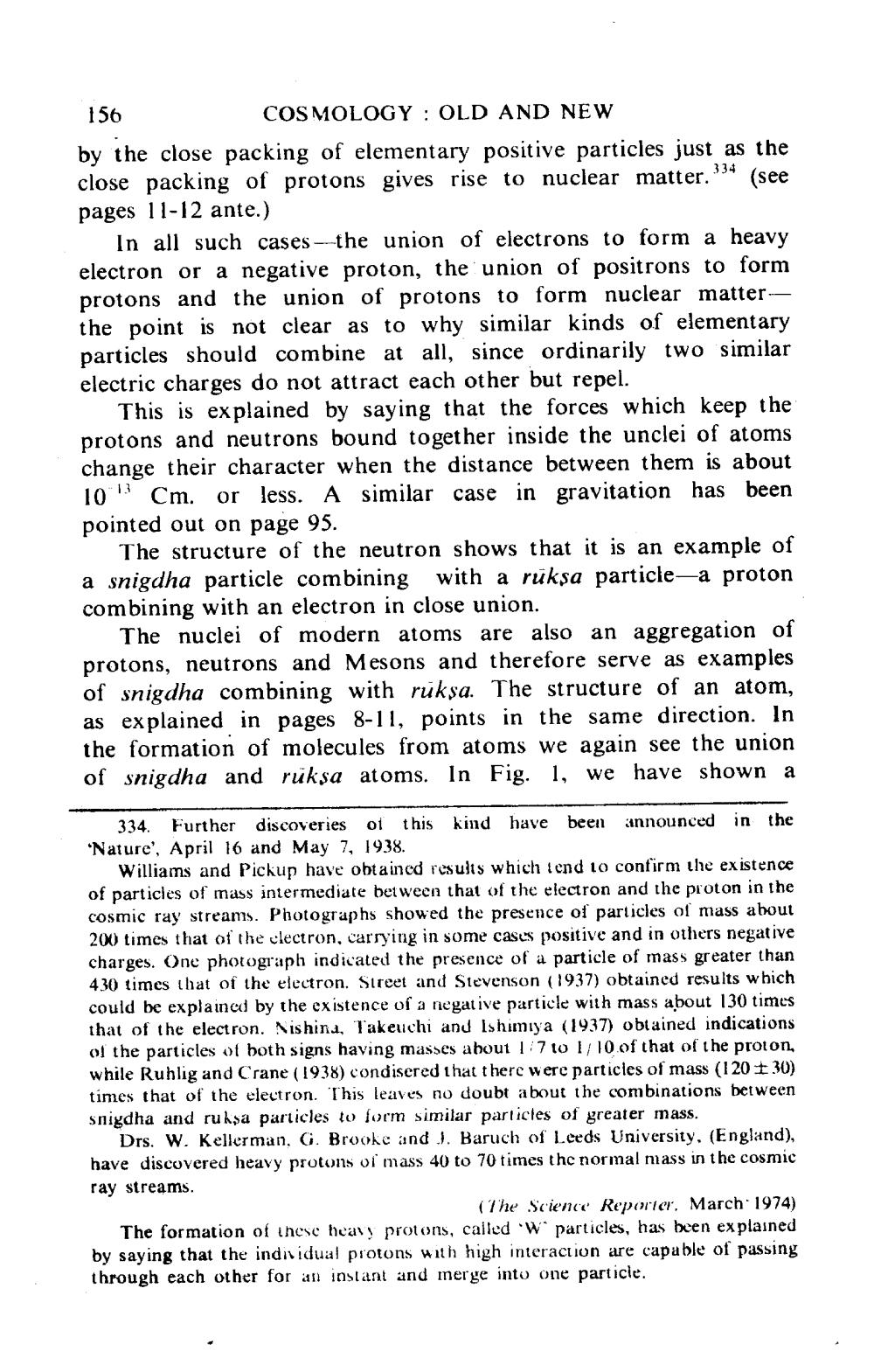________________
156
COSMOLOGY : OLD AND NEW by the close packing of elementary positive particles just as the close packing of protons gives rise to nuclear matter."* (see pages 11-12 ante.)
In all such cases ---the union of electrons to form a heavy electron or a negative proton, the union of positrons to form protons and the union of protons to form nuclear matter-- the point is not clear as to why similar kinds of elementary particles should combine at all, since ordinarily two similar electric charges do not attract each other but repel.
This is explained by saying that the forces which keep the protons and neutrons bound together inside the unclei of atoms change their character when the distance between them is about 10° Cm. or less. A similar case in gravitation has been pointed out on page 95.
The structure of the neutron shows that it is an example of a snigdha particle combining with a ruksa particle—a proton combining with an electron in close union.
The nuclei of modern atoms are also an aggregation of protons, neutrons and Mesons and therefore serve as examples of snigdha combining with ruksa. The structure of an atom, as explained in pages 8-11, points in the same direction. In the formation of molecules from atoms we again see the union of snigdha and rüksa atoms. In Fig. 1, we have shown a
334. Further discoveries of this kind have been announced in the 'Nature', April 16 and May 7, 1938.
Williams and Pickup have obtained results which iend to confirm the existence of particles of mass intermediate between that of the electron and the proton in the cosmic ray streams. Photographs showed the presence of particles of mass about 200 times that of the electron, carrying in some cases positive and in others negative charges. One photograph indicated the presence of a particle of mass greater than 430 times that of the electron. Street and Stevenson (1937) obtained results which could be explained by the existence of a negative particle with mass about 130 times that of the electron. Nishina, Takeuchi and Ishimiya (1937) obtained indications of the particles of both signs having masses about 1 7 to 1/10 of that of the proton, while Ruhlig and Crane (1938) condisered that there were particies of mass (120 + 30) times that of the electron. This leaves no doubt about the combinations between snigdha and ruksa particles to form similar particles of greater mass.
Drs. W. Kellerman, G. Brooke and J. Baruch of Leeds University, (England), have discovered heavy protons of mass 40 to 70 times the normal mass in the cosmic ray streams.
( The Science Reporter, March 1974) The formation of these heavy protons, called 'W particles, has been explained by saying that the individual protons with high interaction are capable of passing through each other for an instant and merge into one particle.




